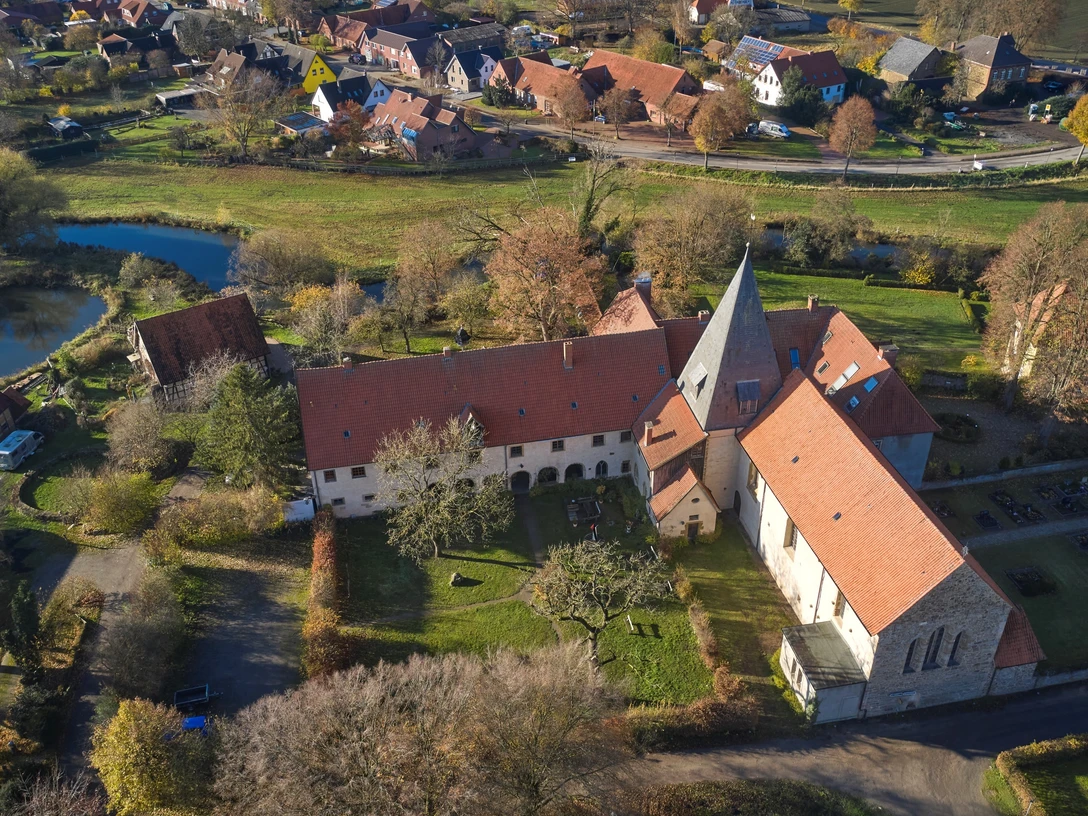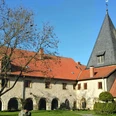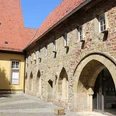History:
Stories / Legends:
- The name "Malgarten" possibly comes from a very old courthouse square (ancient German Mahal).
- Simon Count of Tecklenburg and his mother Eilika founded a nunnery in Essen/Oldenburg in 1170, which was moved to their own estate in Malgarten in 1194.
- A simple Benedictine nunnery with little wealth under the principle of "ora et labora". The convent coat of arms is decorated with sheep shears, as the Bramsch region was an important cloth-making location and sheep breeding and the production of high-quality cloth goods probably also took place here. (at house no. 6, next to the church)
- The monastery remained Catholic during the Reformation and the Thirty Years' War. From 1650 it was a "tolerated" Catholic enclave in the Protestant Bramgau region.
- The abbey was elevated in 1738, secularized and dissolved in 1802/03. In 1815, the abbey church was elevated to a Catholic parish church in Bramsche.
- From 1819 / 1815-1932, it was the seat of the Vörden office with administration and court. During and after the Second World War, the buildings were used for various purposes and later fell into disrepair. Since 1983, the monastery has been privately owned (except for the church buildings). It was transformed into a cultural and event center. Today there is a mixed use of church, cemetery, studios, IAM, concerts, hostel and guest operations, as well as training courses.
Stories / Legends:
- Founding legend:
- In the late 12th century, the powerful Count Simon von Tecklenburg suffered agony due to a diseased leg, but none of the doctors summoned could help him. As it was thought that his leg would have to be removed, the count prayed to God and all the saints in his great distress and vowed to found a monastery if he ever received relief. The ulcer on his shin began to heal and after a month he was able to walk again. Remembering his promise, he and his wife founded a nunnery in Essen/Oldb. in 1175. Twenty years later it burned down, but there was no money to rebuild it. Without further ado, the count accommodated the nuns on his estate near Bramsche. The estate was called Malgarten because a court (mal) met there and it was surrounded by enclosed land (gart).
- The convent had existed there for over 600 years, and when the bones of the count, who was buried there with his wife, were dug up much later for a more magnificent burial, a red ring was found on a knee bone. This was seen as confirmation of what had happened.
Good to know
Openings
Contact person
License (master data)
Tourismusgesellschaft Osnabrücker Land mbH
Nearby




